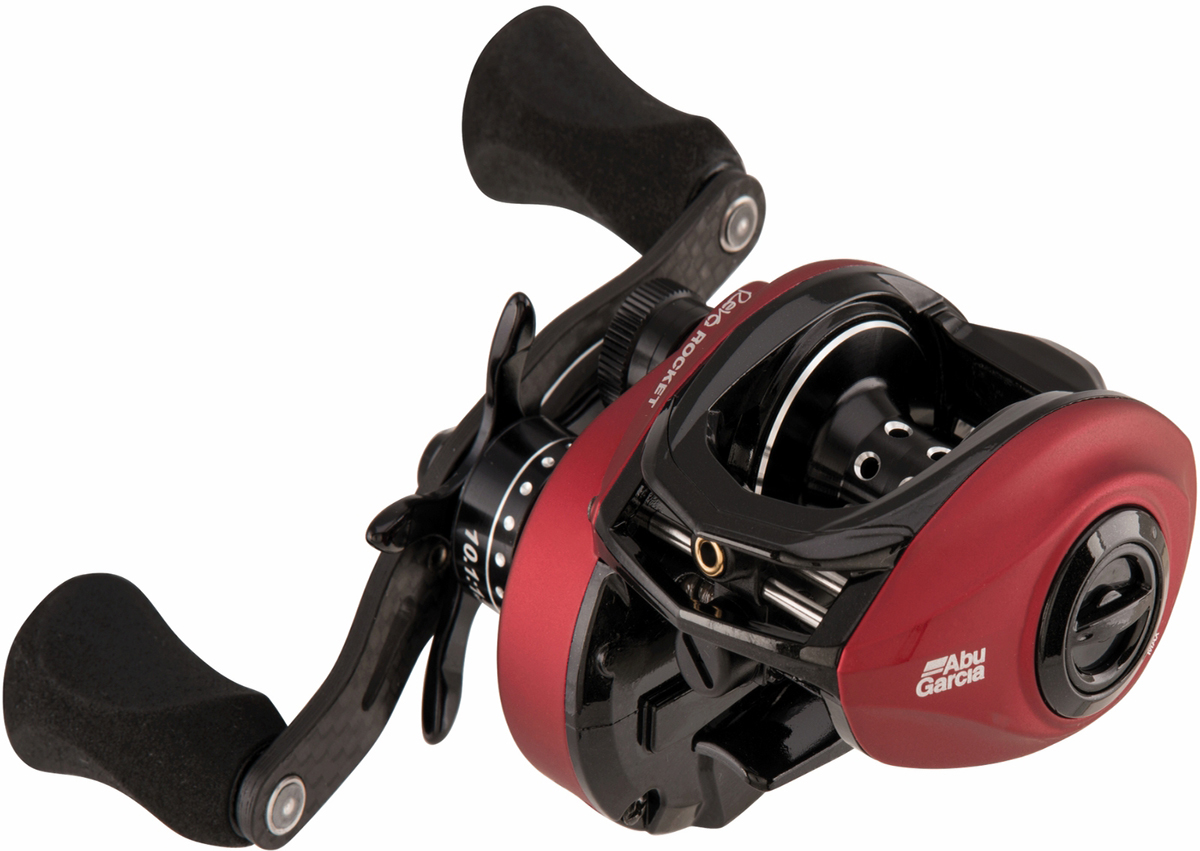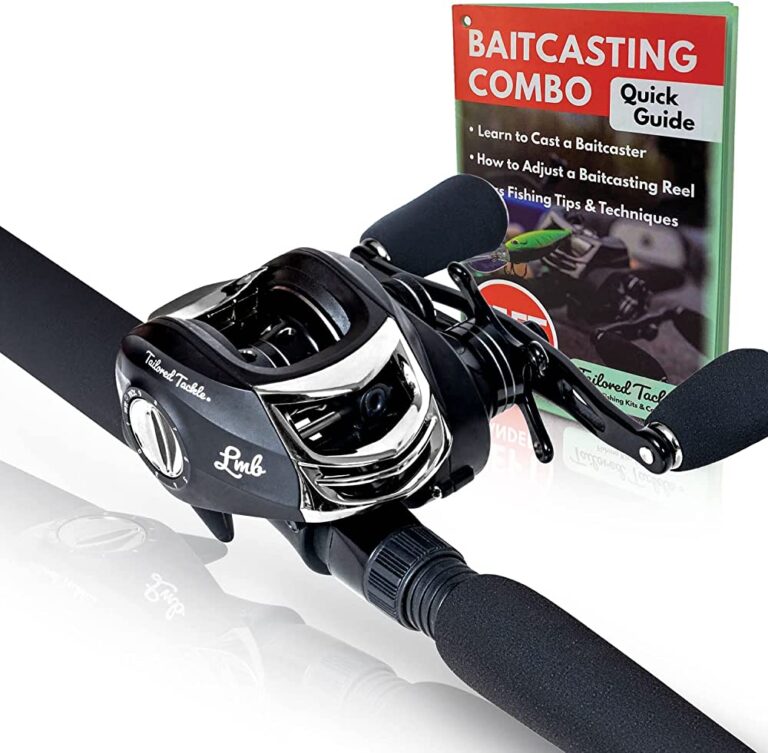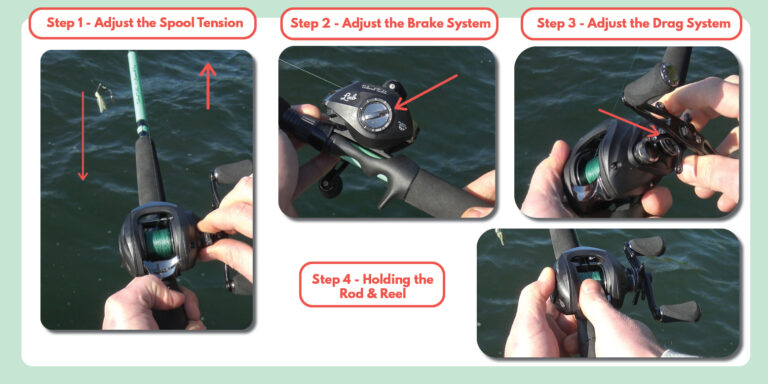Baitcasting and spinning reels are two major types of fishing reels. Baitcasting reels have higher accuracy and can handle heavier lines, while spinning reels are easier to use and better for lighter lines and lures.
Fishing has been a popular pastime for ages and has evolved drastically over the years. Today, there are two main types of fishing reels, baitcasting and spinning reels, each with its unique set of advantages and disadvantages. Choosing the right reel depends on factors such as the fishing technique, target species, and personal preference.
In this article, we will highlight the differences between baitcasting and spinning reels and help you decide which one is best for your needs. So, whether you’re a seasoned angler or a beginner, read on to learn more about these two types of fishing reels.

Credit: www.tackledirect.com
Understanding The Difference Between Baitcasting And Spinning Reels
Brief Overview Of Baitcasting Reels
Baitcasting reels are considered the preferred choice for experienced anglers who want greater control and accuracy over their casting. Here are some key points about baitcasting reels:
- They combine high line capacity with a high level of accuracy.
- Baitcasting reels are ideal for casting heavier lures, such as crankbaits and spinnerbaits, over long distances.
- They require a higher level of skill to operate, especially when it comes to adjusting the spool and brake system to prevent backlash.
Brief Overview Of Spinning Reels
Spinning reels are an excellent choice for beginners and anglers looking to cast small to medium-sized lures. Here is some information about spinning reels:
- Spinning reels are known for their ease of use and versatility.
- They have a fixed spool that allows the line to flow off the spool without tangling.
- Spinning reels are ideal for casting lighter lures, such as soft plastics and live bait.
Primary Differences Between The Two
While there are several differences between baitcasting and spinning reels, the primary ones are as follows:
- Control: Baitcasting reels offer greater control and accuracy, while spinning reels are easier to use, especially for beginners.
- Casting distance: Baitcasting reels are ideal for casting long distances, while spinning reels are better suited for shorter casts.
- Lure weight: Baitcasting reels are designed to handle heavier lures, while spinning reels are best for lighter lures.
- Line capacity: Baitcasting reels can hold more line than spinning reels, making them the preferred choice for deep-sea fishing enthusiasts.
Remember, your choice between baitcasting and spinning reels ultimately depends on your level of skill, the type of fishing you plan to engage in, and your budget. So choose wisely and happy fishing!
Pros And Cons Of Baitcasting And Spinning Reels
Baitcasting Vs. Spinning Reels: Pros And Cons
If you’re an angler, chances are you’ve heard of the never-ending debate between baitcasting and spinning reels. Both have their pros and cons, and ultimately, the choice boils down to personal preference. In this section, we’ll discuss the advantages and disadvantages of each option to help you make an informed decision.
Advantages And Disadvantages Of Baitcasting Reels
Baitcasting reels have become increasingly popular among anglers. They offer precision, power, and control when casting heavy baits, as well as the ability to handle large fish effectively. However, they can be challenging to use for beginners and require some practice to master.
Here are some of the main advantages and disadvantages of baitcasting reels:
- Advantages
- Greater casting accuracy and distance
- More control and precision when casting heavier baits
- Ability to handle larger fish with ease
- Disadvantages
- Steep learning curve for beginners
- More expensive than spinning reels
- Difficult to use when casting lighter baits
- Prone to backlash and bird’s nests if not used correctly
Advantages And Disadvantages Of Spinning Reels
Spinning reels are perhaps the most common choice among anglers, especially those just starting. They are easy to use, versatile, and great for casting lightweight lures. They also offer excellent line control during retrieves, making them ideal for catching smaller fish.
However, they do have some drawbacks. Here are the main advantages and disadvantages of spinning reels:
- Advantages
- Relatively easy to use
- Can cast lighter lures with ease
- Flexible and versatile, capable of handling a range of fishing styles
- Disadvantages
- Limited accuracy and distance when casting heavier lures
- Not as effective at catching larger fish as compared to baitcasting reels
- Line twist can be an issue when using certain types of lures
Both baitcasting and spinning reels have their advantages and drawbacks. When choosing which type of reel to use, consider your skill level, fishing style, and target species. Ultimately, the best choice is the one that suits you best, allowing you to enjoy your time on the water to the fullest.
Which Reel Is Better For Different Fishing Scenarios?
Baitcasting vs. Spinning reels: which reel is better for different fishing scenarios?
Fishing is a beloved sport that requires experience, skill, and the right gear. Among those gears, selecting the appropriate reel for different fishing scenarios is crucial. When it comes to choosing a reel, anglers often find themselves choosing between a baitcasting reel or a spinning reel.
Both reels come with unique specifications and features that work well in different circumstances.
Factors To Consider When Choosing A Reel
Before we dive into comparing the two types of reels based on different fishing scenarios, let’s look at some of the essential factors to consider when choosing a reel:
- Fishing techniques: Some fishing techniques require a specific type of reel, for example, flipping and pitching are best done with a baitcasting reel, while jigging and drop-shot fishing work better with a spinning reel.
- Target species: Smaller fish species can easily be caught with spinning reels, while larger fish species require baitcasting reels for optimum results.
- Skill level: If you are just starting, it is recommended to use a spinning reel as it is easier to handle compared to baitcasting reels that take more time and practice to master.
Comparison Of Baitcasting And Spinning Reels In Different Scenarios
Now let’s look at how baitcasting and spinning reels compare in different fishing scenarios:
Casting Accuracy And Distance
- Baitcasting reel: Baitcasting reels offer better casting accuracy and distance, making it the preferred reel for techniques such as flipping, pitching, and topwater fishing.
- Spinning reel: Spinning reels do not provide the same casting distance as baitcasting reels. However, they are easy to cast, making it the preferred reel for anglers who are still learning.
Line Strength
- Baitcasting reel: Baitcasting reels have stronger lines that enable anglers to catch larger fish species.
- Spinning reel: Spinning reels offer less line strength and are better suited for smaller fish species.
Retrieval Speed
- Baitcasting reel: Baitcasting reels offer faster retrieval speed, which makes them the preferred choice for techniques such as jerkbaits, spinnerbaits, and crankbaits.
- Spinning reel: Spinning reels have a slower retrieval speed, which makes them the ideal choice for techniques such as finesse fishing.
Line Twist
- Baitcasting reel: Baitcasting reels tend to be prone to a line twist due to their design, meaning anglers have to unravel the line frequently.
- Spinning reel: Spinning reels prevent line twist, leading to a more enjoyable fishing experience.
Both baitcasting and spinning reels have their strengths and weaknesses in different fishing scenarios. It’s essential to consider factors such as fishing techniques, target species, and skill level when selecting a reel. Whether you choose a baitcasting reel or a spinning reel, make sure it’s the right fit for your style of fishing.
Conclusion
When it comes to choosing between baitcasting and spinning reels, there isn’t a one-size-fits-all answer. The decision will depend on your level of experience, the type of fish you’re targeting, and the techniques and lures you plan to use. Both baitcasting and spinning reels have their own advantages and disadvantages, and what may work for one angler may not work for another.
Ultimately, the best way to make an informed decision is to try both types of reels and see which one feels more comfortable and suits your fishing style. Whether you go for the accuracy and control offered by baitcasting reels or the versatility and ease of use of spinning reels, make sure to practice and hone your skills to become a proficient angler.
Happy fishing!



